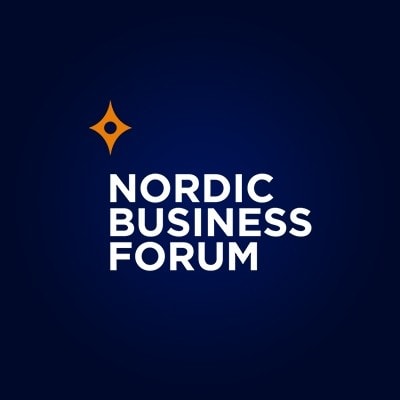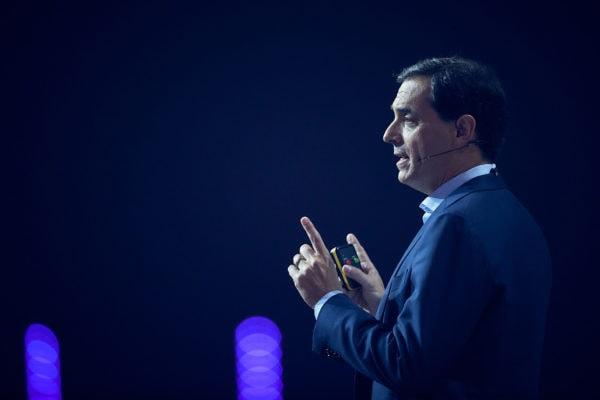4Feb2021
Morten Hansen is a Norwegian management professor at the University of California, Berkeley. He is the co-author of the bestseller Great by Choice and the author of the highly acclaimed books Collaboration and Great at Work. Hansen is also a renowned leadership expert; Thinkers50 has ranked him as one of the world’s most influential management thinkers four times.
At our online event in September 2020, Hansen spoke about the change we need in management and provided three suggestions for leaders in order to successfully adapt to this new world order.
Step 1: Implement a Hybrid Working Model
Without a longer introduction, Hansen cut right to the chase. The first transformation he sees leaders need to do in their organizations is to change the where and how we work. “Is the office dead? My answer is no. We will return to the office. But we will return in a new way”, he stated.
Hansen proposed that whereas before the pandemic, the world worked more or less entirely at the office, and now during the crisis, people have worked more or less entirely remotely, in the new normal we should combine the two. “That’s my forecast, and it’s also my wish.”
To further elaborate his recommendation, Hansen referred to a study he conducted exploring the productivity of 5,000 people working at the office. What he found was that one-fifth of the people work really efficiently at the office, but the remaining 80% did not do so well. When looking at how we’ve worked during the crisis, a study by Boston Consulting Group interviewing more than 10,000 people in the US, Europe and India, showed that the performance has not been drastically different compared to the times before the pandemic. When it comes to individual and managerial tasks, the self-reported performance was roughly the same. Yet the difference was seen in collaborative tasks. On those tasks that require people working together, the results when working in a remote setting were significantly worse.
Therefore, Hansen argued that companies should, once possible, implement a hybrid model: working some days of the week at the office, and some days at home. He however pointed out that there’s an important guideline when working with a hybrid model. “You need to have a set of core days when everyone is at the office.” The reason why this is crucial is that as the collaborative tasks are harder to do remotely, the company management should set core days when everyone is at the office for that synergic work. It should also be predictable for the employees when they are required to work at the office, Hansen added.
And why is this hybrid model superior? “First of all, it is more productive. It gives employees more autonomy, and research demonstrates that autonomy makes employees more motivated.” Two other advantages of this model, Hansen claimed, are that it offers employees a better work-life balance and that it doesn’t cost a lot for the company.
Hansen also acknowledged that some leaders are afraid of remote work as they feel they will lose control over their employees. “I understand that anxiety. But let’s face it. That has always been the case. If your employees want to shirk or cheat, they can do it at the office as well.” He shared a disturbing trend that has been going on for the past months, where some companies have installed spyware to their employees’ computers in order to track what they are doing while working remotely. But that doesn’t work, and it basically says to your employees that you don’t trust them, Hansen highlighted. “I hope you don’t go down this same path that you will just manage by spyware. There’s a much better way.”
Step 2: Get Rid of B.S. Work and Use Value Metrics
Hansen’s second step for making the required shift in management was to get rid of meaningless work. He referred to a book called Bullshit Jobs by David Graeber, who in the book listed all kinds of work that people are doing around the world producing little to no value. He mentioned a few examples from writing a report that nobody reads to sitting all day at a reception desk where the phone rang once – that’s what bullshit work refers to.
“Use this moment in time, this crisis, to get rid of bullshit work, to clean up all the clutter.” Hansen actually suggested writing a stop-doing list to start getting rid of all the meaningless tasks in your organization. He argued that there are surely some unnecessary meetings, emails, reports, or presentations that we can all cut out to save some time.
During his Q&A session, Hansen mentioned that with the time that is then won by getting rid of some tasks, we should focus on innovation and learning. If we’re spending all our time on busywork, we don’t have the time to create new things and new value. “Organizations that want to survive in the new normal, need to do new things. And you need to free up time to do that.”
He underlined that we should focus our attention on the things that truly create value. Therefore, he also proposed starting to measure the output of our work instead of the input. “What we need is a value metric revolution”, Hansen advised.
To illustrate this point he spoke about a few examples. He pointed out that medical doctors should look at the percentage of accurate diagnosis instead of the number of patients they’ve seen. Lawyers should look at the percentage of legal problems solved instead of the number of billable hours. And teachers should focus on the percentage of students who actually learned instead of the number of classes taught. “We need to focus on value metrics. And we should use this crisis to make the transformation.”
He concluded that using value metrics is actually a great way to manage remote workers because you’re looking at the output, the value they create, not the input. For example, when talking about a marketing report, it’s better to look at the quality of the report itself than the hours spent writing the report or where it was written.
Step 3: Double Down on Purpose, Passion, and Values
The last suggestion Hansen had was that we need to increase the attention put on purpose, passion, and values. “We really need to motivate and inspire people, because these are difficult times right now, and they will continue to be difficult. You need to double down on passion, purpose, and values as the true inspirational drivers for your employees,” he said.
Hansen claimed that people want to experience passion at work – they want to be excited about the work they do. In addition, people want to have a purpose at work; they want to know that what they do has a meaningful contribution beyond themselves. And both of these need to be aligned with your company values. So, you as a leader should look at the intersection of all these three to inspire your employees and to create a strong company culture.
What does the perfect alignment give to you and the employee? According to Hansen, the employee gets focused energy and a sense of meaning. From the leadership perspective, it provides a) better performance, and b) guidance. “In our study, employees who feel a strong sense of passion and purpose, perform much better than those who do not. And when people buy into the values of the company, believe in the purpose, and are passionate, they do the right things without being told.”
He further argued that the alignment of these three things – passion, purpose, and values – contributes to the company culture. Hansen elaborated that a company has a strong culture when the employees are doing the right things without being told what to do. “Strong culture is the guiding system, not bureaucracy”, he said.
The Combination Should Be the New Normal
To conclude, Hansen mentioned that by changing your leadership according to these three steps, you can improve your company’s financial performance, increase your employees’ wellbeing, and potentially contribute to the society and the environment. “This is great management, much better than we did before COVID, much better than we did during COVID. This should be the new normal.”
This article is a summary of Hansen’s keynote at our online event in September 2020. If you want to read what the other speakers said at the event, download the executive summary for free.

 by:
by: 
